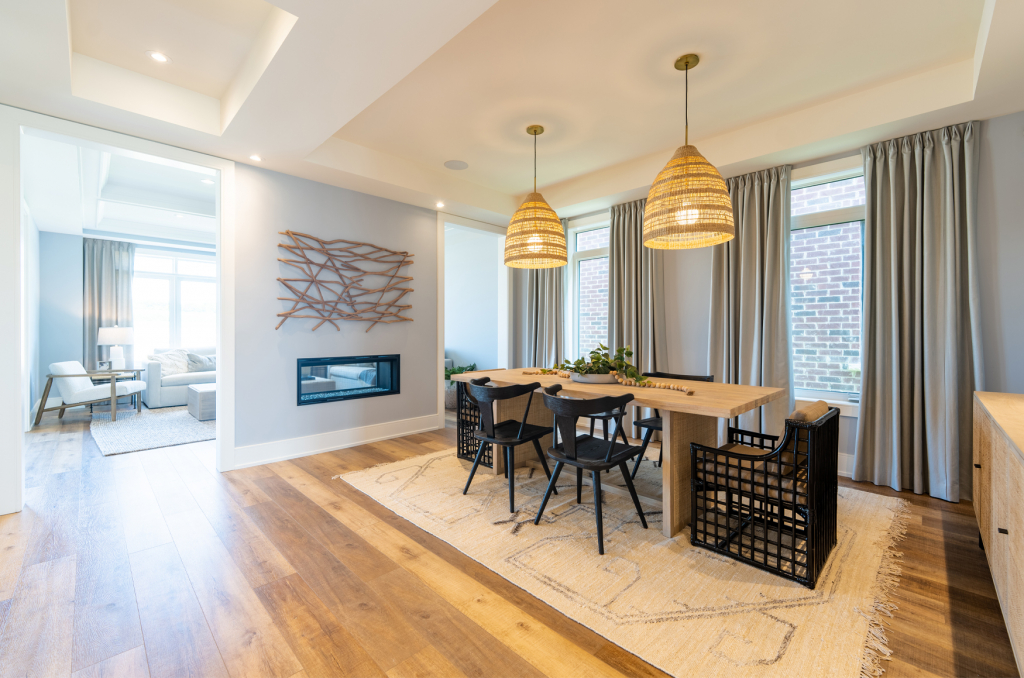 Maximizing natural light in your home enhances its aesthetic appeal but also contributes to a healthier and more energy-efficient living environment.
Maximizing natural light in your home enhances its aesthetic appeal but also contributes to a healthier and more energy-efficient living environment.
At Geranium, our homes are designed with large windows and open floorplans to fully utilize the benefits of natural light. When designing our model homes, we collaborate with talented interior designers to maximize the lighting in each of our homes, through a blend of natural lighting as well as decor elements to brighten up a room.
There are generally three types of lighting used to create balance in a room:
General Lighting (Ambient Lighting) provides overall illumination, without creating harsh shadows or glare. Ceiling-mounted fixtures, such as pot lights, flush-mount or semi-flush-mount fixtures work well in hallways for an even distribution of light. Pot lights are a great choice for hallways, family rooms, kitchens, and anywhere you’re looking for an even distribution of light.
Task Lighting focuses on specific areas for activities that require concentrated light, such as cooking, or working at a desk. This type of lighting is more intense and directed, providing ample illumination for tasks.
Accent Lighting highlights specific features or objects within a space, adding depth and visual interest. Accent lighting fixtures are often adjustable to create different moods or emphasize various elements.
We sat down with Jo-Ann Capelaci, interior designer for our Midhurst Valley homes, to learn more about the various types of lighting used in our model homes, and how they were utilized to create a brighter, more inviting living space.

Jo-Ann Capelaci, president of Colours & Concepts Inc., interior designer of our Midhurst Valley model homes.
Kitchens
The kitchen area should be well lit and have dimmers for adjusting light levels based on tasks or ambiance needed. “In the Hemlock model at Midhurst Valley, pot lights provide general lighting, valance lights serve as task lighting, while pendants provide the accent necessary for above the island,” explains Jo-Ann. Under-cupboard lighting is another form of task lighting in a kitchen, providing much-needed illumination to essential food prep areas.
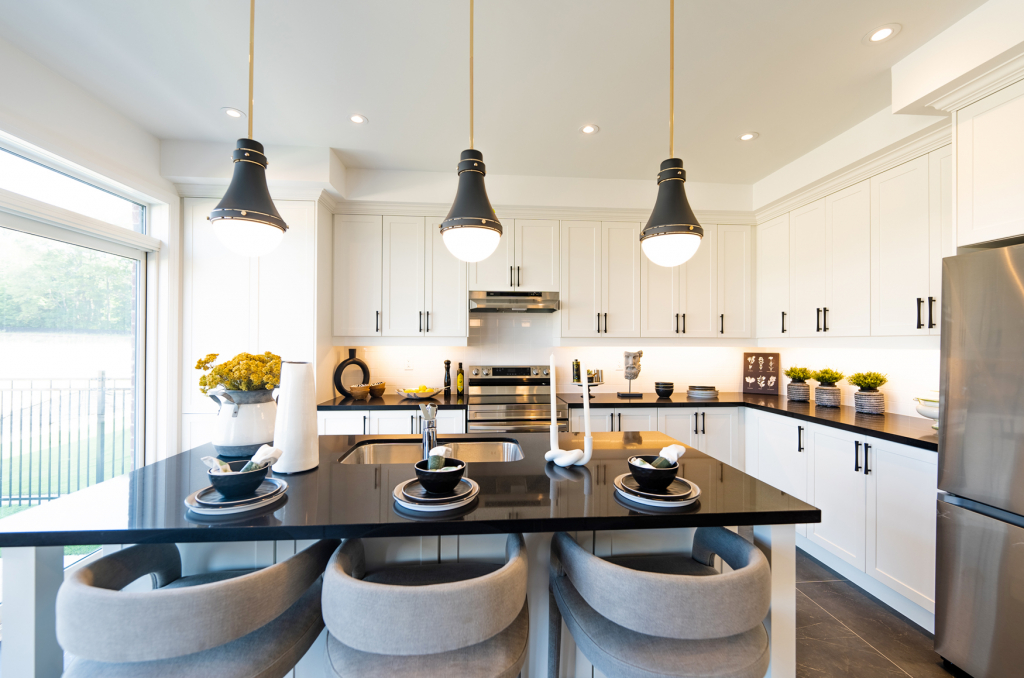
This Midhurst Valley kitchen utilizes all three types of lighting.
Hallways
Pot lights are a great choice for hallways, family rooms, kitchens, and anywhere you’re looking for an even distribution of light. “In this hallway in our Hemlock model, the fixture hangs down from the ceiling for interest, however not too far to obstruct views,” Jo-Ann points out, “natural light floods in through the large windows.”
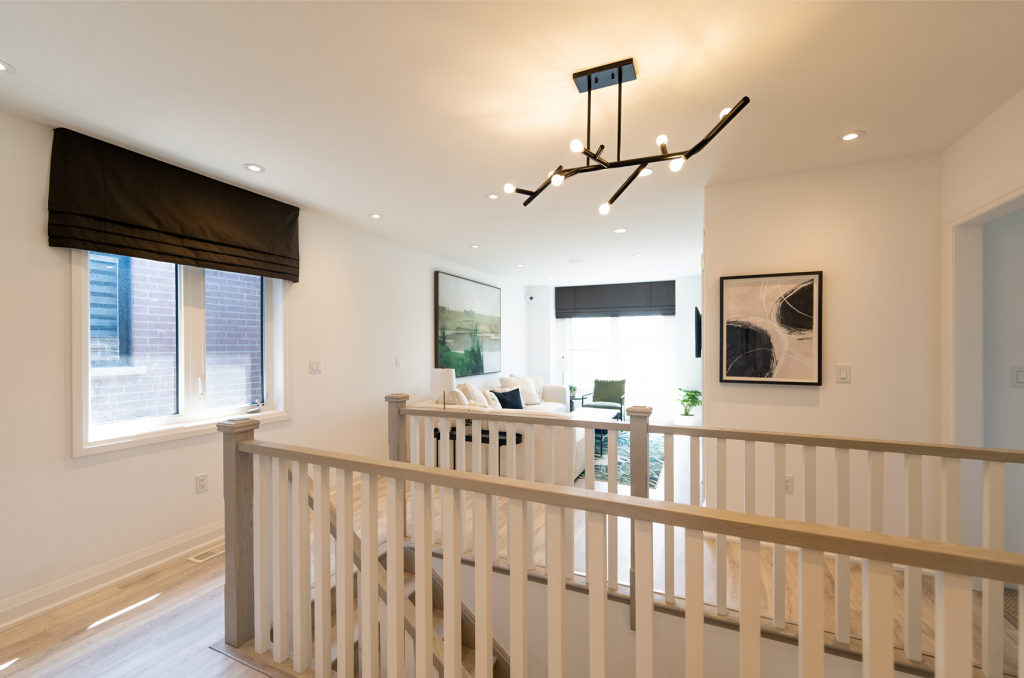
This hallway uses both pot lights and chandelier to enhance the natural lighting.
Dining
Whether it’s a dining room or in the kitchen, these areas should have accent lighting as well as ambient. Pendant lights with adjustable height are great for over the table, allowing you to set the desired height and create a focal point. Dimmer switches are a must in dining rooms. A brighter setting might be right for a weeknight dinner with the kids, while a dimmer setting will better suit more formal entertaining.
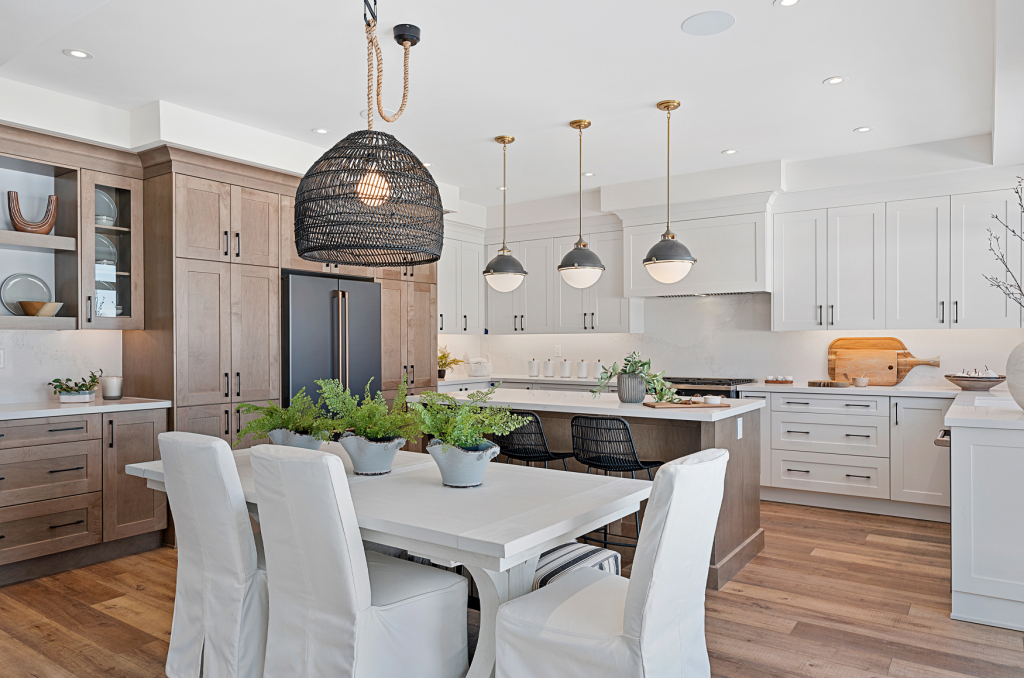
The different types of lighting is spaced evenly throughout the room for a balance of light.
Bathrooms
“When it comes to your bathroom,” Jo-Ann explains, “opt for side lighting near vanities for optimal grooming and makeup application and maintain even spacing to harmonize with accent lighting. A chandelier can provide accent lighting and serve as a focal point above a bathtub, offering an intimate atmosphere for a luxurious soak.”
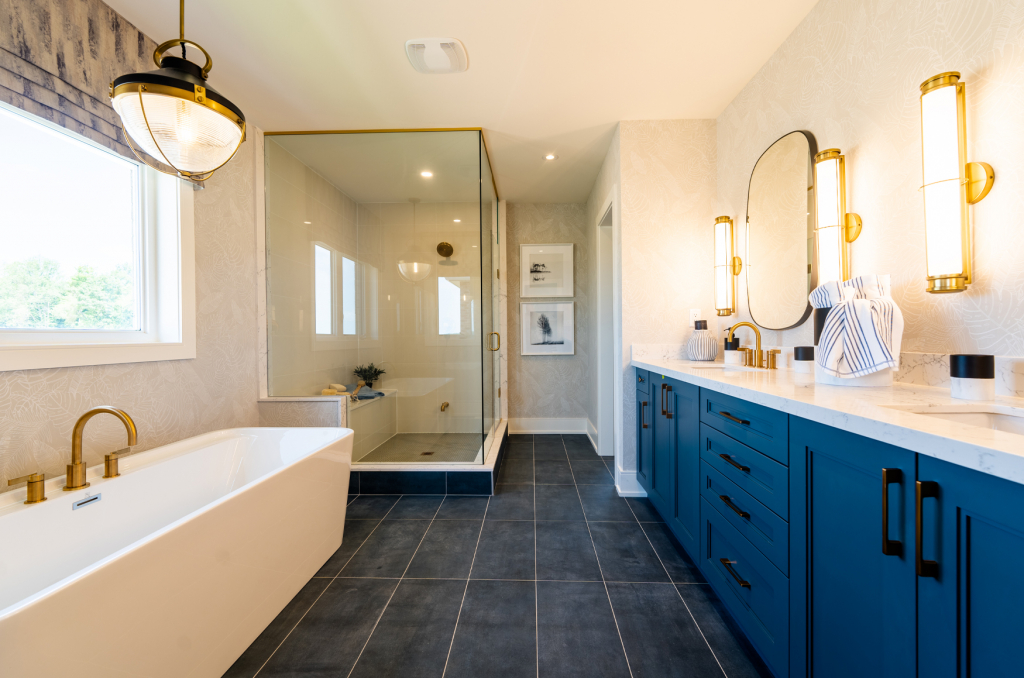
Proper lighting in the different areas of a bathroom contributes to the room’s overall comfort.
By incorporating all three types of lighting – general, task, and accent – into your home design, you can achieve a harmonious balance of gorgeous decor and natural lighting.
Looking for some more inspiration on lighting or designing your home? Visit our Midhurst Valley or Allegro model homes for beautiful design ideas.
